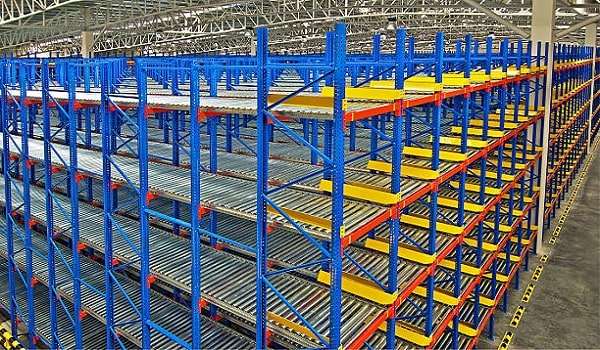Optimize Storage with Warehouse Racking Systems in Singapore

Warehouse racking systems refer to the structured storage methods used in warehouses and distribution centers to optimize the available space and accessibility of inventory and products. As a major logistics and supply chain hub, warehouses and storage facilities in Singapore utilize various types of racking systems suited for different industries and inventory types.
Selecting the appropriate warehouse racking system is crucial for maximizing storage capacity, while allowing easy and quick access to store and retrieve items. The main factors in choosing a racking system are the dimensions and weight of inventory, storage height, accessibility requirements, and floor space.
Common Racking Systems
Common racking systems used in Singapore warehouses include:
Pallet Racking
This racking uses rows of vertical beams with horizontal braces to hold pallets. Forklifts can access pallets directly from aisles between pallet racks. The system allows adjusting shelf height and depth for various pallet sizes. Pallet racks are commonly used in food & beverage, retail, and general warehousing where pallets are the main storage unit.
Cantilever Racking
Ideal for long, bulky items like timber, pipes, and furniture. The cantilever arms protrude out from vertical columns to support the items. Forklifts access the items from below the arms. Variable arm lengths and spacing provide flexibility. Used extensively in lumber yards, pipe stores and furniture warehouses.
Mobile Racking
Minimizes aisle space by using movable rack units that can be positioned side-by-side or moved apart for access. Reduces floor space needed while maintaining storage density. Drive-in racking and shuttle racks are variants allowing deeper storage by forklift access into racking lanes. Used for archival storage and compact warehouses.
Multi-Tier Racking
Utilizes height fully with multiple rack levels connected by walkways or stairways. Personnel access items manually. Useful for small parts storage, office records etc. Labor-intensive, hence used where space is very limited. Common in electronics, spare parts and inventory warehouses.
Automated Storage & Retrieval Systems (ASRS)
Computer-controlled cranes and shuttles locate and move inventory in high-density racking. Reduces manual labor and utilizes height and depth for very dense storage. High investment, suited for high-value inventory and e-commerce order fulfillment warehouses.
Garment Racking
Specialized for hanging garments on wheeled hangers that can be moved along rails between stacked racks. Maximizes garment storage in compact space. Widely used in apparel, uniforms and textile warehouses.
Drive-In Racking
Allows fork trucks to drive directly into storage lanes between racks to place and retrieve pallets. High-density storage suitable for single product type. Used in cold storages and warehouses handling few product lines.
Flow Racking
First-In-First-Out (FIFO) racking designed to automatically allow loading from one end and unloading from the other end. Ensures stock rotation and first expiry-first out in food, electronics and pharmaceutical warehouses.
The choice of racking affects the inventory capacity, use of cubic space, labor efficiency, access and replenishment rates. Hence, warehouses use racking suited for their specific inventory to optimize material flows and operations.
Retail distribution centers use adjustable pallet racks to handle diverse inventory on pallets and cartons coming in mixed sizes. Cold storages use drive-in racks to compactly store large quantities of single products like meat or dairy. Furniture warehouses employ cantilever racks to handle long and odd-sized items. Electronics parts distributors may combine bins on shelving with automated mini-load systems to achieve speed along with high density.
E-commerce fulfillmentcenters implement ASRS systems and sortation systems to achieve rapid order processing. Garment exporters use mobility garment racks to store a wide range of hanging apparel. Pharmaceutical warehouses install flow racks or carousels to manage expiry-based stock rotation.
As Singapore pushes for greater productivity and land use efficiency, advanced warehouse racking systems play a key role in supporting its regional distribution hub status. By optimizing inventory storage and accessibility, modern warehouse racking systems help businesses maximize productivity and customer service. Utilizing the latest racking solutions tailored for specific inventory is crucial for Singapore warehouses and distribution centers to gain a competitive advantage.

